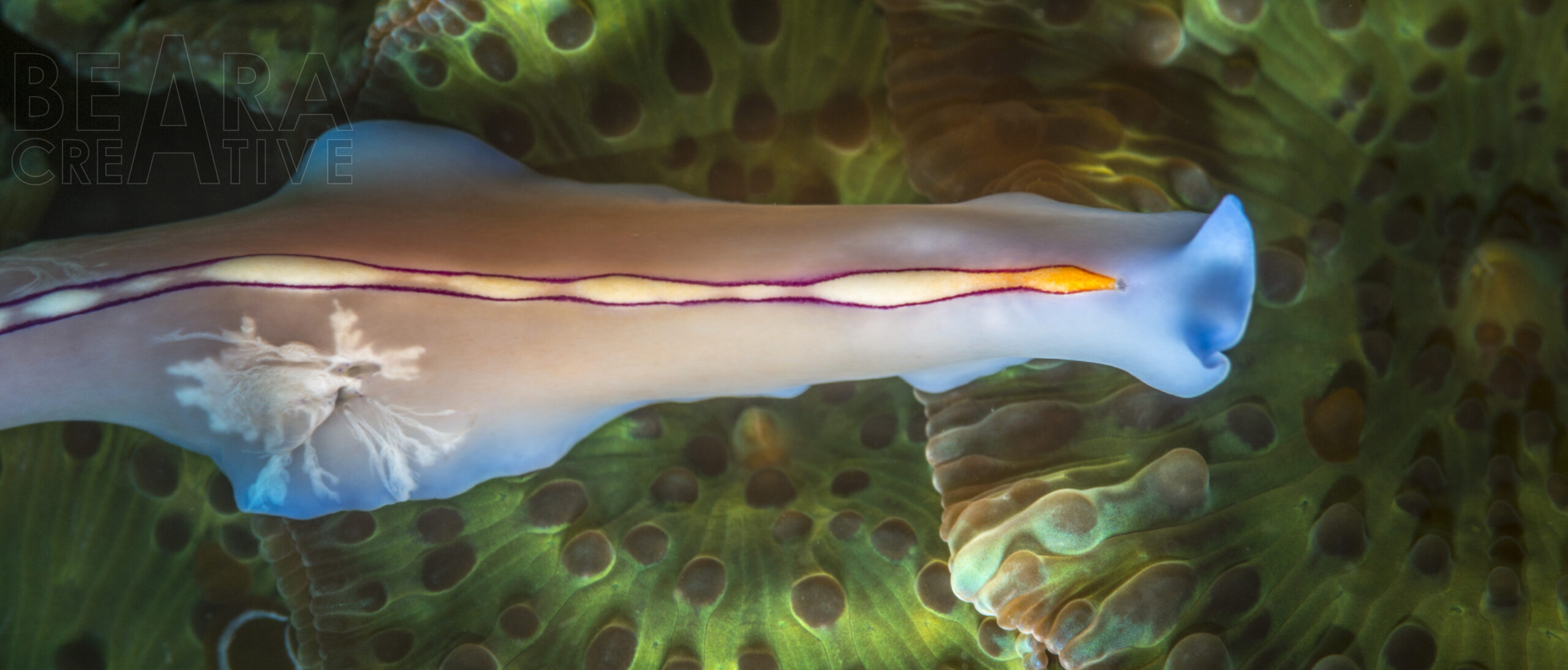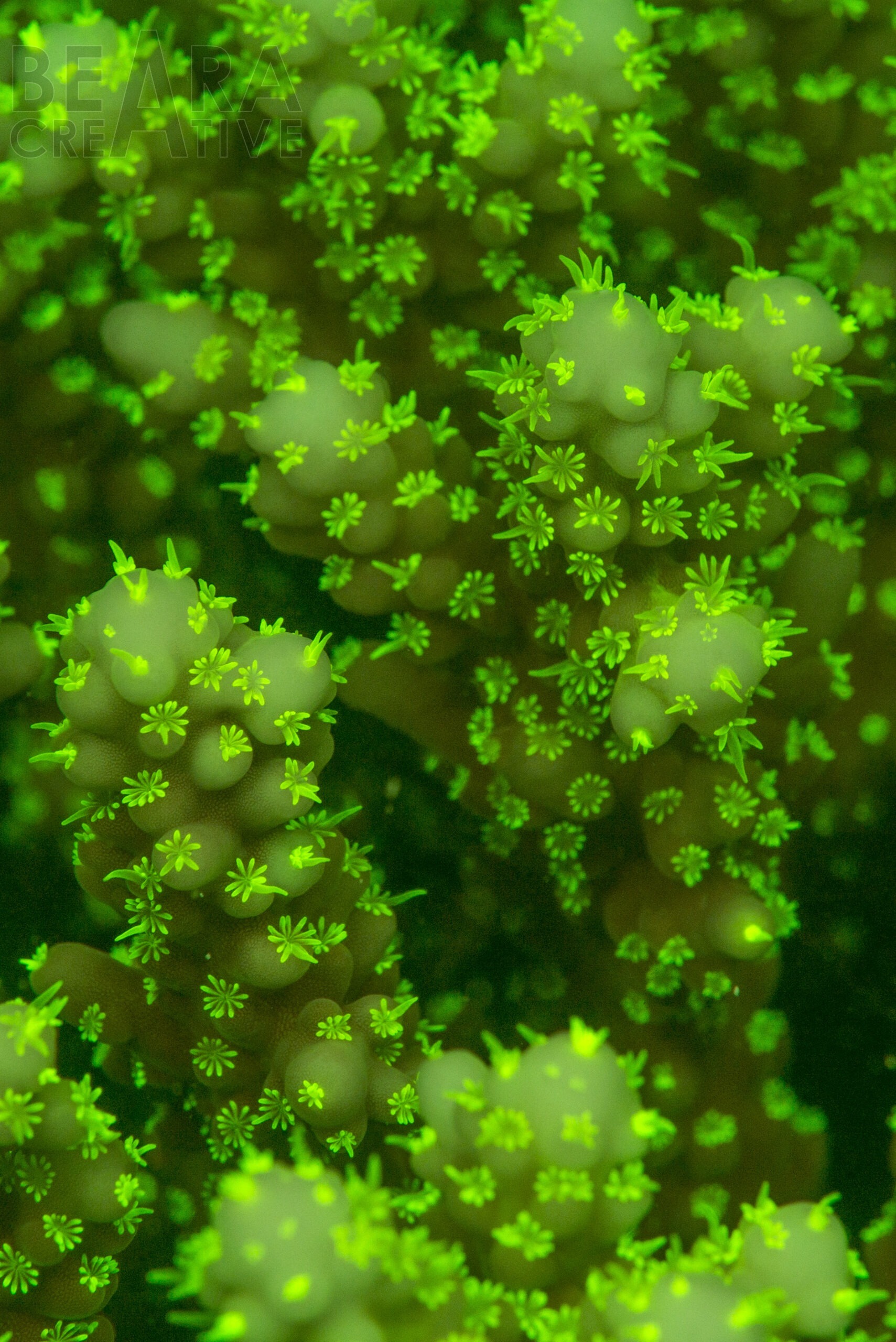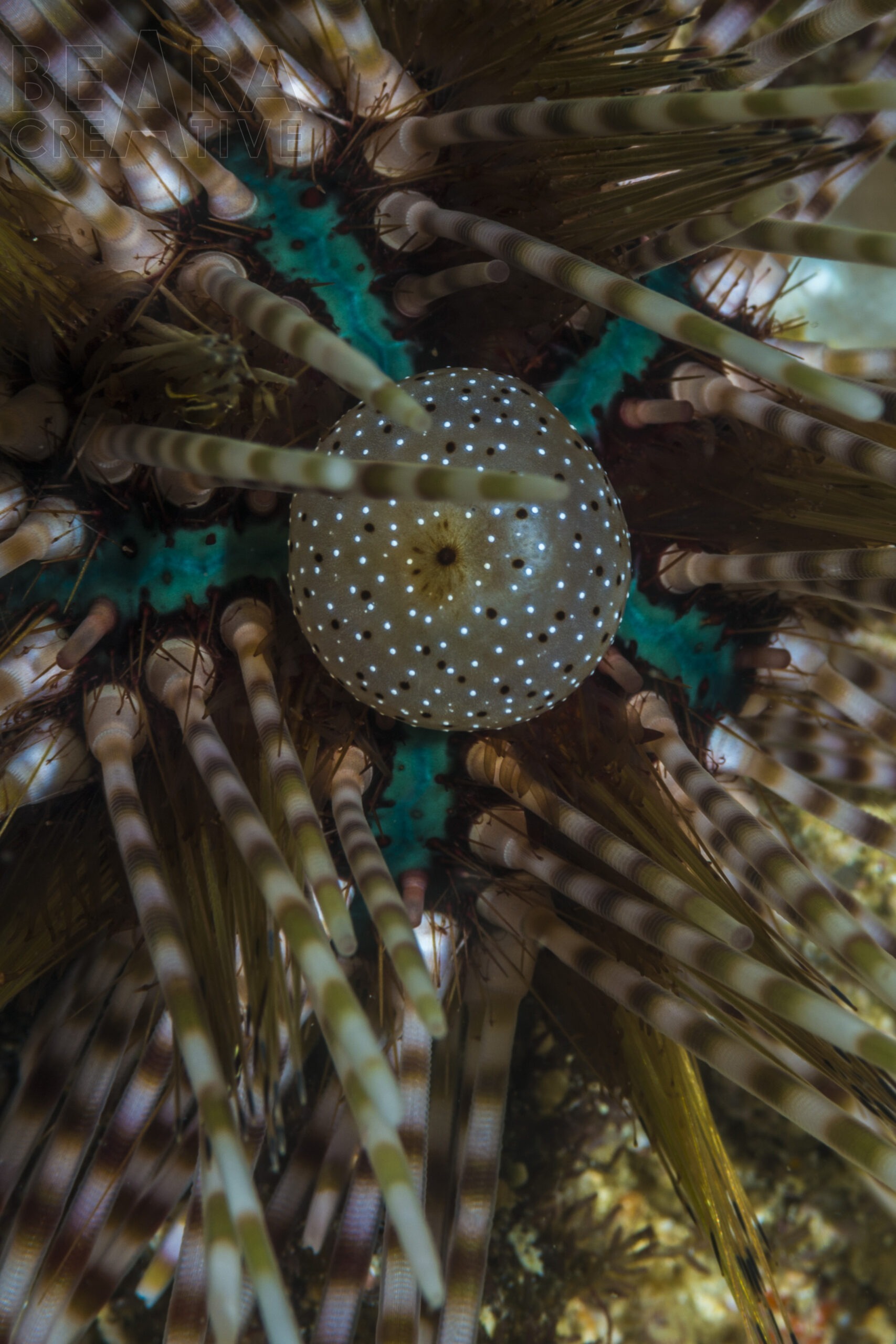
Racing stripe flatworm swims over Discosoma coral

Location & date
Chocolate Island, Malapascua, Philippines. 16th November 2014
Subject
The racing stripe flatworm Pseudoceros bifurcus is a ‘say what you see’ species. The distinctive white stripe with dark border easily identifies this species. This example has a cut, possibly a bite mark, on one side. This particular flatworm was moving fairly quickly over coral. Species of the Discosoma genus are corallimorphs, with large wide oral discs. The discs are often brightly coloured, as in this specimen. The colour comes from symbiotic algae.
About this image
At first glance this looked like a fast moving nudibranch. In tropical waters, flatworms are often similar in look to sea slugs. Often brightly coloured and slug-like in appearance, they move sinuously across the substrate. In this case I saw this racing stripe flatworm was moving across a particularly photogenic coral. The length of the flatworm made it difficult to get the whole thing in frame.
Camera setup
Nikon D800, 105 mm Nikon lens in a Nauticam NA-D800 housing with two Inon Z240 strobes.
ISO 100, f/22, 1/125 sec
More like this:
Marine invertebrates photography (on this site)




